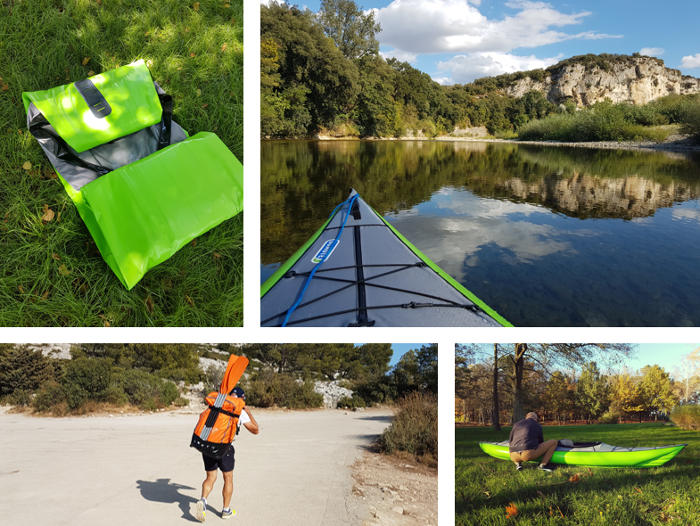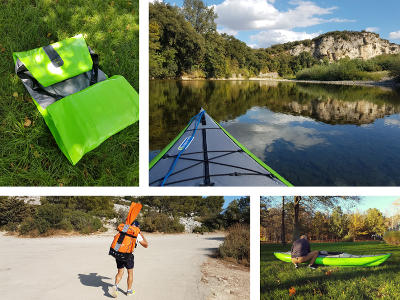This article explains what you should consider when using an inflatable. Compared to a solid-hull boat, an inflatable must be cleaned in a different way after usage in salt water. The direct sunlight must not forget as well. In this article, we show what to mind and give you some good advices in order that your inflatable will last for a long time.

1. Right pressure
Every inflatable has a maximum allowed air pressure and must not be exceeded. But a too low air pressure is not good either. The inflatable would be too soft which negatively affects the inflatable’s performance. That’s why your boat should be inflated properly. If you don’t have an air pump with a pressure gauge, you should get a pressure gauge to check the pressure when inflating. Some inflatables, e.g. from Intex or Sevylor, come with a plastic strip which you lean on a specific spot of the boat skin, so you know if it’s fully inflated. In this case an extra pressure gauge is not necessary. Never use compressed air to inflate your boat.
2. Cleaning
After every use, your inflatable should be free of sand stones before packing to avoid damage in the boat-skin. At home you should completely clean your inflatable if necessary. Lukewarm soap water is sufficient. Never use aggressive cleaning agents or thinners. If your boat trip was in salt water, you should definitively rinse the boat-skin with fresh water afterwards. Otherwise the salt would damage the boat-skin after a while. Before storing the boat, the boat must be absolutely dry to prevent mold.
3. Storing
Some things should be considered when storing your inflatable (esp. before winter storage). The boat should be loosely rolled up but not compressed packed as when transporting the boat. If you have enough storage space, you can even store the boat slightly inflated. More important is that you never place heavy objects on the boat during storage. Make sure that you store your boat at a dry place, protected from sunlight without major temperature variations.
4. Direct sunlight
On longer trips on the water, the inflatable is pulled to the shore or even laid up on land during a break. But you should never forget one thing: the excessive sunlight. In spring and autumn less critical, but in summer the direct sunlight can destroy your inflatable. As long as the boat is in the water there are no worries since the water keeps the boat cool. If possible, leave your inflatable in the water and attach it with a rope to a landing stage. But on land or shore the sunlight raises the pressure of the air chambers. A variation of 1 °C causes a variation of the pressure in the chambers of +/- 4mbar (0,06 PSI). In this case, just place your inflatable to a shaded place or cover the boat with a cloth. Otherwise the martial might be overstretched and seams may split.
5. Removable fin
Most of the inflatable kayaks and canoes are equipped with a removable fin which helps keep the boat in a straight line. Using the fin is especially recommended when you use your inflatable in deep water. In contrast to shallow waters, the fin is not recommended. The fin could damage the bottom of your boat and in case of white water, the fin reduces the maneuverability of the boat.
6. Spiky Objects
In contrast to a solid-hull boat, you shouldn’t drag your inflatable over sands and stones, but using the grab handles to carry the boat instead. That’s the best way to protect your boat from sharp and spiky objects. On the water, make sure to avoid unnecessary groundings. The higher the quality of your inflatable, the stronger the material and the more resistant the boat-skin is. Nevertheless, you should always protect your inflatable from the contact with sharp and spiky objects on land or water.

Should I inflate my kayak at beach or at home?
Hello Carl,
normally you inflate your kayak near the water, so in your case at the beach. However, there are also people who don’t like deftating and inflating the kayak all the time and transport the inflated kayak for example on the roof of the car and store it in the garage. In this case some air pressure should be released so that you prevent overpressure.
Best regards
Christian